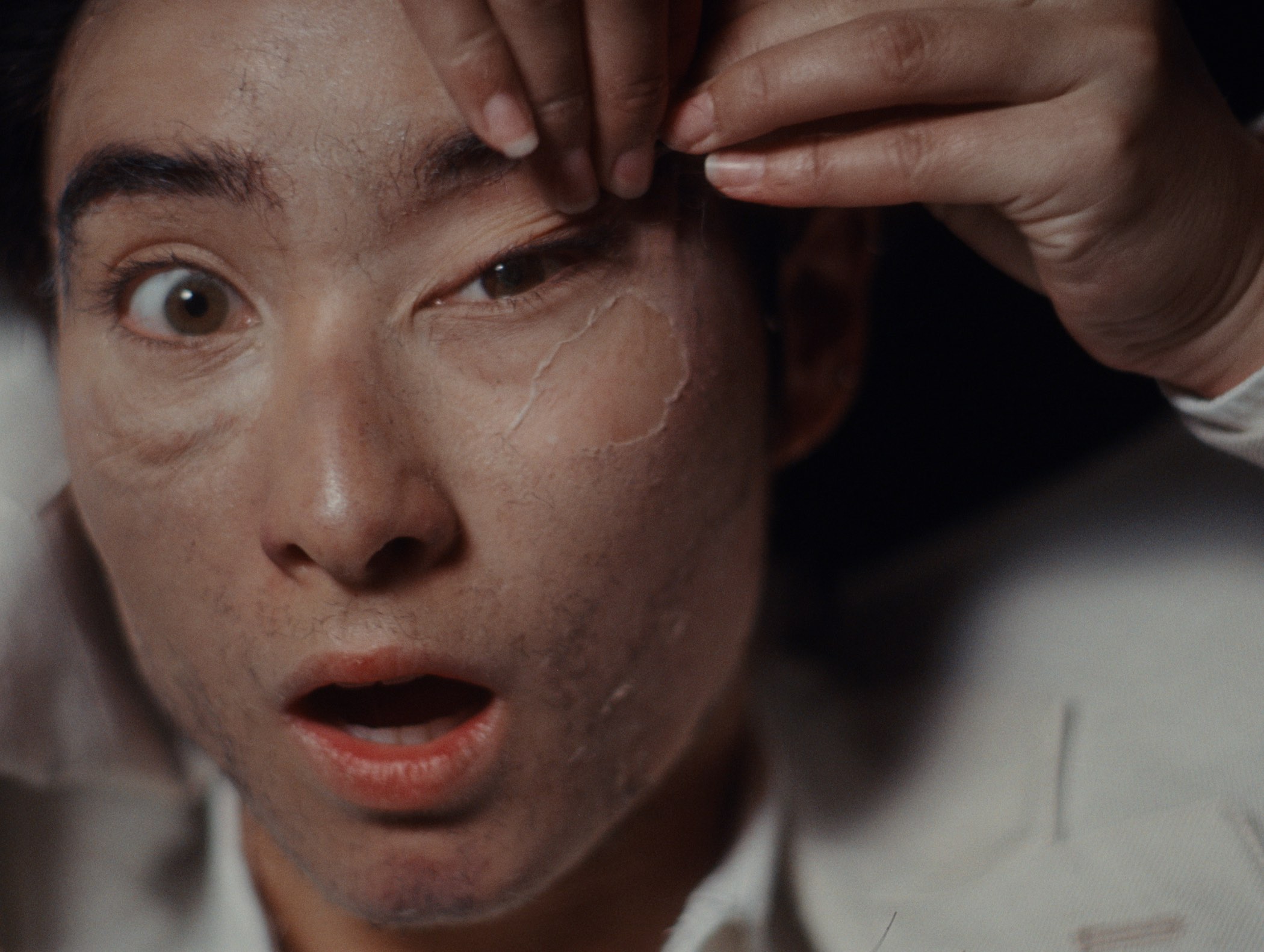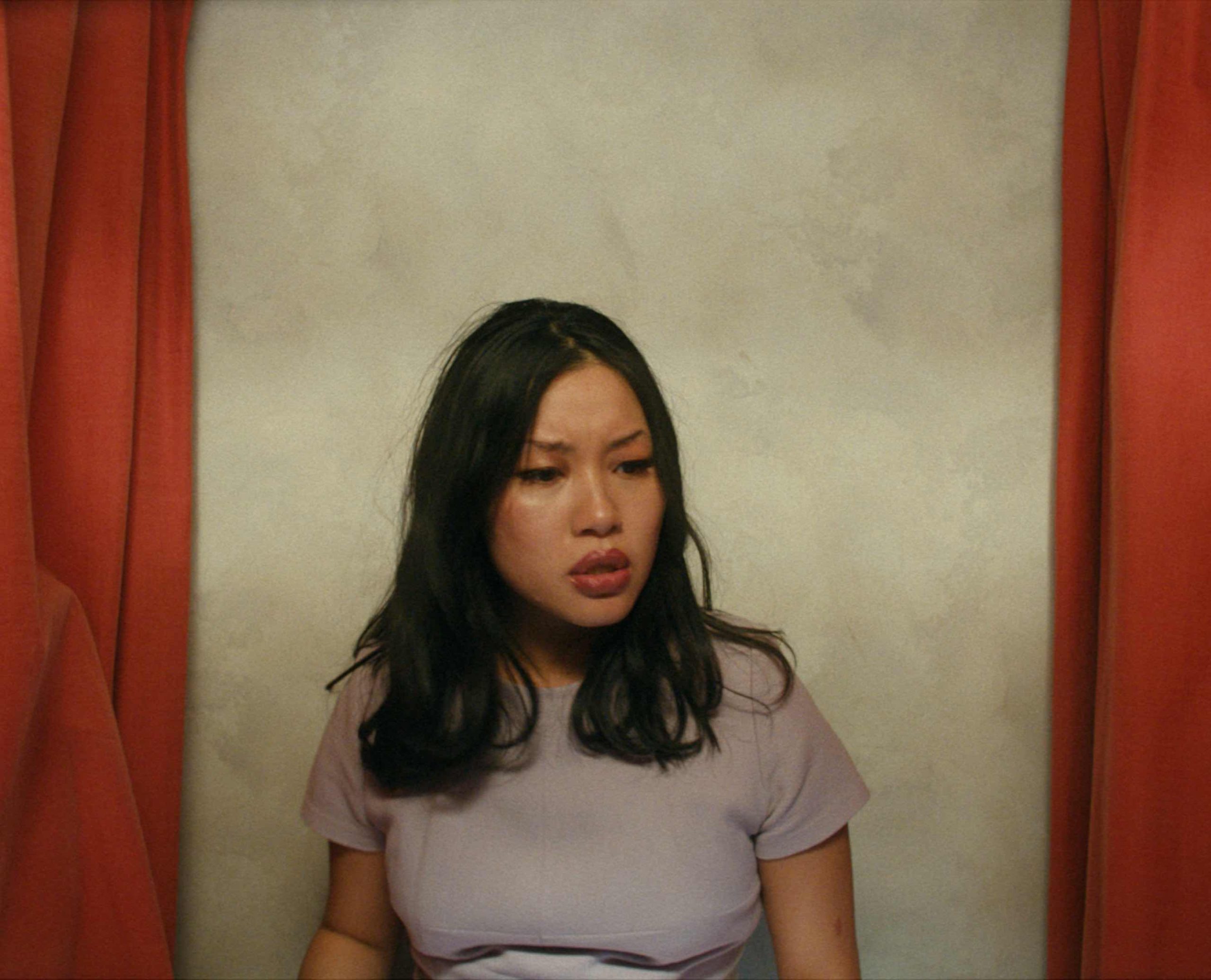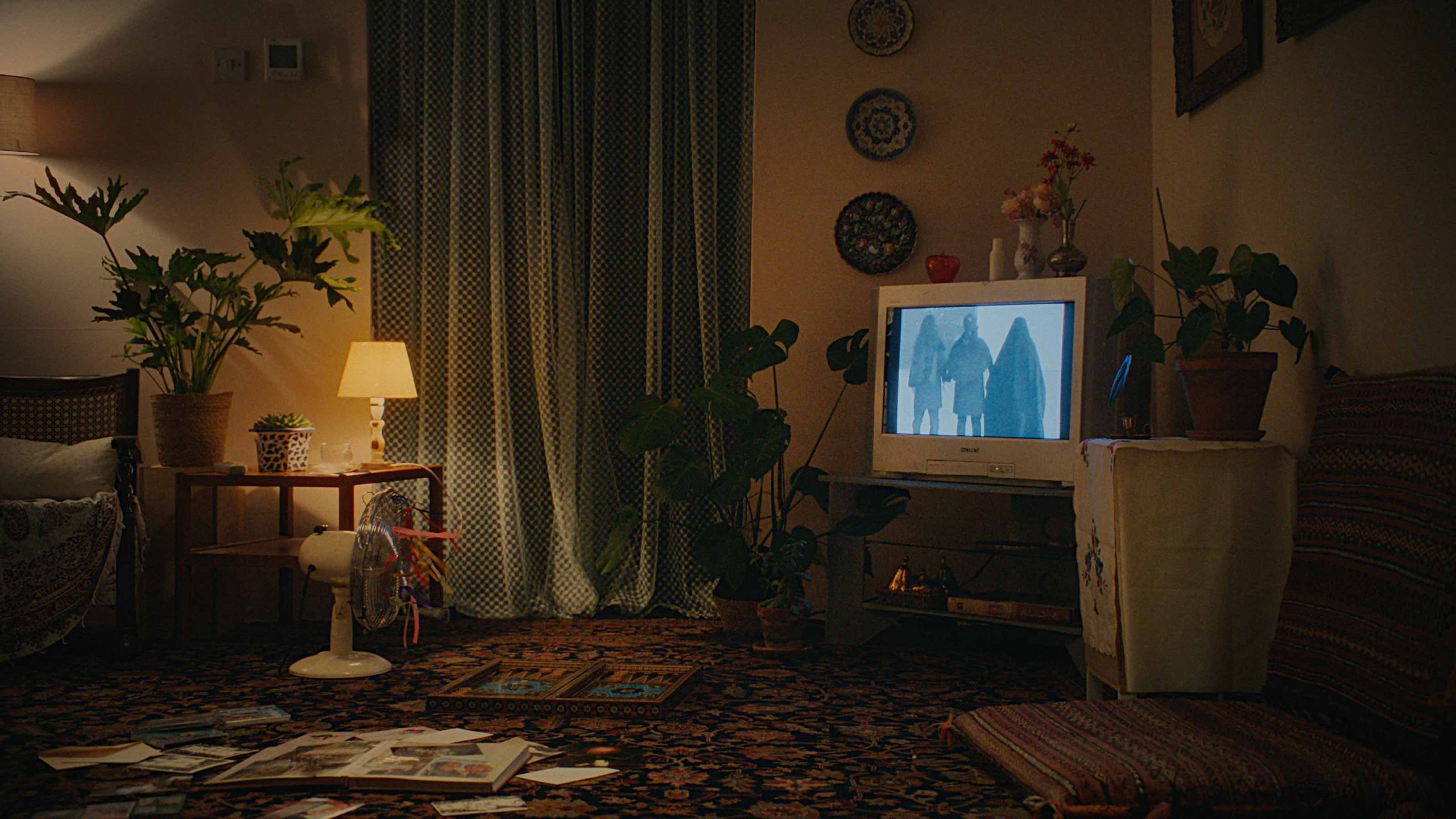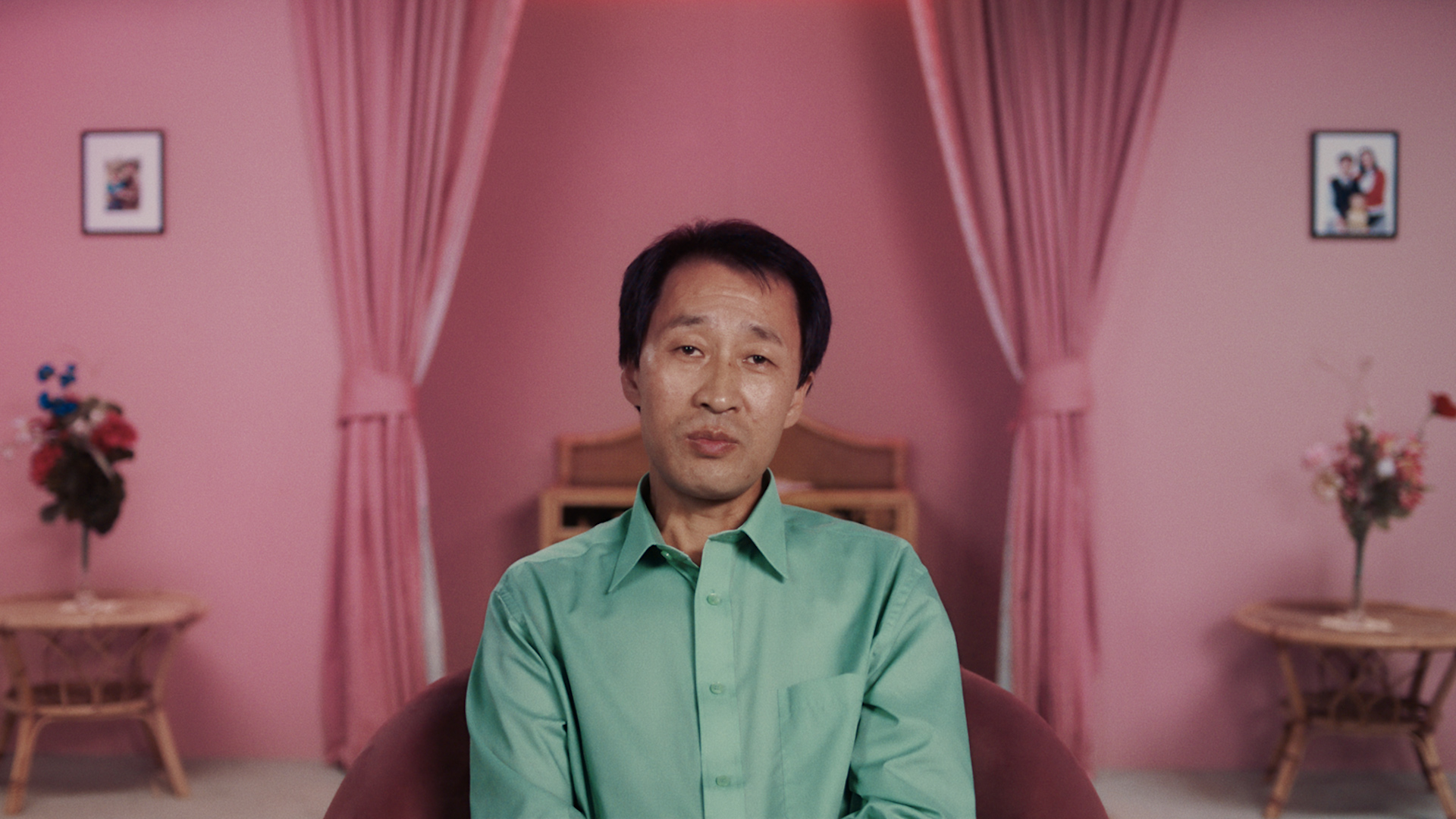For Roxy Rezvany, the process of creating a documentary is akin to making someone’s portrait. As the director explains over the phone, her approach is “rooted in [the] visual arts; it lies in the space [between] capturing the real and being open about your interpretation.” Since the release of her first short documentary Little Pyongyang in 2018, the director has carved out a niche for stylised, yet intimate portrayals of her subjects. Little Pyongyang follows the story of Joong-wha Choi, a former soldier and North Korean defector, who has rebuilt his life in New Malden, a suburb of south west London.
What makes Rezvany’s documentary so intimate is that the director spent several years getting to know the community living in New Malden – home to the largest network of North Koreans outside of South Korea. Little Pyongyang is not a documentary shaped by a Western (capitalist) perspective of the ills of North Korea, but the story of one individual: Joong-wha, who grapples with the grief and guilt of having left his home country and family behind.
Facilitated by Rezvany’s gaze, Little Pyongyang is thus a poignant portrait of humanity as Joong-wha weighs up whether the life his children have in London is better than the one they might have had in North Korea. Though we are shown family dinners, a community event held in a local hall and daily errands in New Malden, the documentary also places Joong-wha in a confessional-type setting. This bubblegum pink “living room” – neither the protagonist’s home in London nor North Korea – captures a sense of Joong-wha’s dilemma of what “home” really means.
This use of colour – so bright and vivid that at times it feels starkly at odds with the trauma Joong-wha grapples with on screen – is drawn from the pastel hues that trim and adorn North Korean interiors and advertising (see the photography of Oliver Wainwright and Nicholas Bonner for reference). Objects, meanwhile, that illustrate Joong-wha’s recollections – a pair of homemade ice skates, or a steaming bowl of rice – come to stand in for abstracted memories of his upbringing.
While Little Pyongyang deals with complex emotions, Rezvany’s directorial voice is minimal. Rather, she leaves enough space to construct an empathetic portrayal of the dilemmas that Joong-wha faces. As a director, Rezvany navigates a balancing act between painting her portrait of her subject, and giving them the space to present themselves. And it’s something she is adept at. It is a reflection of the emphasis she places on working collaboratively with her subjects – and it is why she can describe her documentaries as more rooted in the visual arts than, say, an investigative film that requires “journalistic distance.”

This approach also lends itself to Rezvany’s second documentary, Wifi Rider (2021), which focuses on Shukri Lawrence, a young Palestinian designer. Shukri narrates the story of his childhood growing up in East Jerusalem, as a young boy who felt like an outsider and found solace and escapism on the internet. While initially finding value in the messages of self-love and self-expression in American performers like Lady Gaga and Kesha, Shukri discusses his confliction of being proudly Palestinian through the lens of a Western world that doesn’t necessarily recognise his own existence. Thus, Wifi Rider is a nuanced exploration of competing issues. For one, it considers the pains that come with growing up – of teenage angst and loneliness; but Shukri’s own coming of age story, if you will, is also shaped, defined and overshadowed by global geopolitics. As in Little Pyongyang where Rezvany affords her protagonist the space to share deeply personal experiences, Wifi Rider disarms the politicised prejudice attached to Palestinian identity.
In both Little Pyongyang and Wifi Rider, the director interweaves archival footage to enrich the stories she tells. In Wifi Rider, Shukri’s footage plays out via an iPhone and MacBook; in their own way, the use of such technology is a subtle nod to the perceived global connectivity that the internet allows for, imposed and managed by huge (Western) corporations. In Little Pyongyang, meanwhile, news footage plays via an old television in a recreated living room scene. I wonder if using objects like an old TV set or a laptop is something of a motif in her work, to which Rezvany demurs. “When I’m working with archive [footage] – and a lot of what you see on those screens is archival – it’s not always high resolution. For me, to place it on a TV partly masks the low resolution. Sometimes, you might want to have something really pixelated, but that’s not the feel of these films.” It harks back to the balance she seeks to achieve between capturing something that feels, and looks real, whilst also creating something that is a conscious choice. As Rezvany acknowledges, there are other tools that could be used to portray archival footage – say, wall projections: “playing it on a TV screen feels more real where a wall projection is more abstract.
The importance of communicating a sense of reality was also a key consideration for Photo Booth (2022), Rezvany’s first short narrative film which offers a snapshot into the lives of a young couple. Set in the 1970s, the film is an ode to a generation of people who emigrated to Britain in the ‘60s and ‘70s. The idea of using a photobooth, meanwhile, stemmed from Rezvany’s fascination with the booths and the photo strips they produce. “There’s something so magical about them,” Rezvany says, especially photos of couples which feel “more romantic and intimate than [the] archetypal couples’ photo” – like, say, a wedding photograph that is supposed to symbolise and represent love.
What’s more, the photobooth allowed Rezvany to consider what the viewer sees. Though the space itself is restrained, from the point of view of the booth’s internal camera, “you actually see so much movement and transformation,” Rezvany says. “And you can start to play around with what you do and don’t see in that space”. Over the course of almost seven minutes, the couple laugh, argue, rearrange themselves and the booth’s curtain, and pose. Photo Booth peels back the curtain to reveal the inner-workings of a long-term relationship, then, to show how a couple in love act and communicate with one another.

When it came to writing the characters of Mina and Feras in Photo Booth, it was clear to Rezvany that they would be an immigrant couple “coming to the UK but from different places and different cultures.” This stemmed from Rezvany’s own background as being of Iranian and Malaysian-Chinese descent, whose parents both moved to the UK. The idea of having a first generation couple as a visual image – a “union and relationship you don’t get to see [on-screen]” – was crucial; as was the fact that, by virtue of the setting, the couple are isolated from stereotypical portrayal of immigrants in film. “What became important was framing out a lot of the noise attached to the cultural and ethnic labels that the characters are forced to bear,” Rezvany says. Thus, little of Mina and Feras’ lives as characters in Photo Booth is revealed beyond what we, as viewers, see – and in that sense shifts the focus away from whether they are, or aren’t, characters conforming to a certain perspective of immigrants living and working in the UK in the 1970s.
For Rezvany, Photo Booth was a feat: “I was able to do everything I wanted to do in terms of honouring the characters, acknowledging their history, but not falling foul [in terms of] putting yet another unhelpful image out there.” What we do, and don’t see, on screen – literally – is thus a reflection of what is, and isn’t, revealed of the couple’s story (as individuals, and as a partnership). By creating characters that feel as real as Mina and Feras do, Rezvany outlines that her intention was to “create a couple [that viewers] would feel compassion towards, as individuals and as a couple.” How characters are written, played and perceived is a theme at the heart of Rezvany’s latest short, Honesty (2023) which centres around a young woman (played by Emily Renée, the film’s co-writer) being interviewed after reporting domestic abuse. As the protagonist is interrogated, her veracity is queried with increasing intensity over the film’s seven and a half minutes. And as the pressure builds, her vulnerability becomes more exposed. Without revealing too much of Honesty’s plot, the film – which Rezvany likens to a thriller – is neatly layered with conflating ideas about cultural identity.
For Rezvany, the film stems from questions surrounding representation on screen – as well as grappling with what identity and belonging means to the director, as a mixed race person. Honesty considers these themes on multiple layers, by considering how on-screen representation is crafted and interpreted by those behind and in front of the lens (let alone by the viewer). In doing so, the film shines a light on how cultural identity is projected and perceived in real life, too. “It was interesting to see the parallels between the emotional experience of being mixed race and the power dynamics inherent in ‘roleplay’,” Rezvany says. In this way, Honesty explores how we perceive ourselves, and how that is seen (or not seen) by others. And, as the director adds, “whether they think you represent what it is that they’re trying to say or what they think a story needs.”

At its core, then, Honesty “acknowledges the fact we’re all living life through our own subjective experience – and the consequences of that.” It’s a point that harks back to Rezvany’s approach as a director of documentaries, too. Though both Little Pyongyang and Wifi Rider are portraits of Joong-wha and Shukri, collaboration from the participants is crucial to the process for Rezvany. In doing so, the director crafts intimate portraits of her subjects, painted with humanity and care while drawing attention to the real-life consequences of global politics.
Last year, Rezvany was commissioned by Vogue to direct a short film, Women, Life, Freedom following the death of Mahsa Jina Amini in police custody last September who had been detained in Iran for incorrectly wearing her headscarf. In the film, actress Golshifteh Farahani, artist Shirin Neshat and designer Paria Farzaneh discuss the significance of the protests that unfolded in the aftermath of Amini’s death and which have morphed into calls for the end of an oppressive regime in itself; as Farzaneh says in the film, “it’s not against a veil, it’s not against a hijab, it’s for freedom of choice.”
In Women, Life, Freedom, Farahani, Neshat and Farzaneh who, like Rezvany are part of the Iranian diaspora, reflect on the powerful image of young people putting their lives at risk in order to fight for change and freedom in Iran. The regime have responded with extreme violence – with hundreds of protestors having lost their lives, many sentenced to death and, at the time of writing, the execution of four men accused of involvement – Sayed Mohammad Hosseini, Mohammad Mehdi Karami in January this year, and Majid Reza Rahnavard and Mohsen Shekari in December 2022. As recently as March 2023, an extreme response to the protests continues, with reports emerging of the poisoning of over 1,000 schoolgirls since November.
Thus, Women, Life, Freedom not only raises awareness of what has been happening in Iran (and what is at stake), but also pays tributes to a handful of those protestors who have lost their lives: framed photographs of Sarina Esmailzadeh, Asra Panahi, Hadis Najafi, Hananeh Kia, Minoo Majidi, Mahsa Mougouyi, and Nika Shakarami hang on a wall in the way family portraits would be displayed at home. As Rezvany explains, “my hope is that people around the world take in their names, are inspired to learn about the hundreds of others, and to call for an investigation into the circumstances of their deaths so that we can see the true scale of the human rights abuses that are taking place.”
